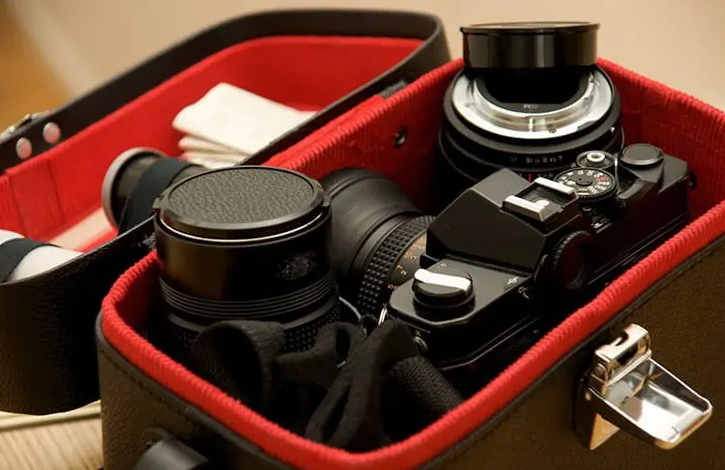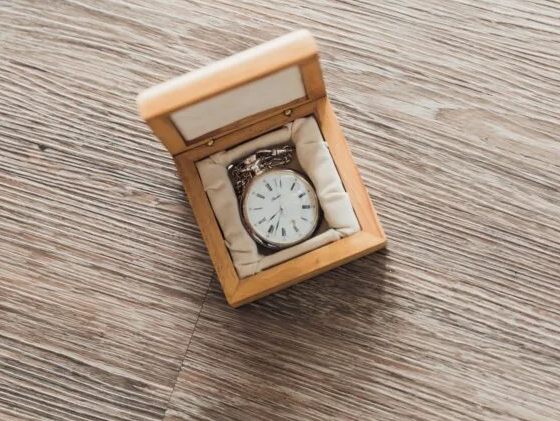Yes, hard cases can scratch over time due to wear and tear or exposure to abrasive materials.
Table of Contents
Types of Hard Cases
When it comes to protecting your devices, hard cases are one of the most popular options available. But not all hard cases are created equal. In this section, we’ll explore the various types of hard cases that exist, focusing on their materials and specific applications. This will include plastic hard cases, metal hard cases, and composite material cases.

Plastic Hard Cases
Plastic hard cases are by far the most common and are usually the most budget-friendly. Made from hard plastic such as polycarbonate or ABS, these cases offer reasonable protection against impacts and scratches.
Advantages:
- Lightweight
- Affordable
- Wide variety of colors and designs
Disadvantages:
- Less durable than metal cases
- May crack under severe impact
Here, you’ll find a variety of subtypes including clear cases, colored cases, and even custom-designed cases.
Metal Hard Cases
Metal hard cases are often considered the most rugged and durable option. Materials such as aluminum or titanium provide excellent protection against both impacts and scratches.
Advantages:
- Highly durable
- Excellent impact resistance
- Sleek and professional appearance
Disadvantages:
- Heavier than plastic cases
- Often more expensive
Popular choices in this category include the Pelican case for cameras and other sensitive equipment, as well as luxury smartphone cases made from metals like titanium.
Composite Material Cases
Composite material cases combine the best properties of plastic and metal. They usually consist of a hard outer shell made of metal and an inner layer of plastic or rubber for shock absorption.
Advantages:
- Excellent impact resistance
- Moderate weight
- Versatile in design and appearance
Disadvantages:
- More expensive than plastic cases
- May be bulkier due to multiple materials
Among the well-known options in this category is the OtterBox Defender Series, known for its rugged durability and comprehensive protection.
Factors Influencing Scratch Resistance
Scratch resistance is a crucial factor for many when selecting a case for their device. While no case can guarantee absolute protection against all types of scratches, some perform better than others. Understanding what affects scratch resistance can help in making a well-informed decision. This section will explore three significant influencers: material quality, finish and coating, and environmental factors.
Material Quality
The base material of the case plays a pivotal role in determining its scratch resistance. For example, cases made from premium materials such as high-grade polycarbonate tend to be more resistant to scratches than those made from cheaper plastics.
Advantages of High-Quality Materials:
- Offers consistent protection over time.
- Retains the aesthetic appearance of the case for a longer duration.
- Enhances the overall durability of the case.
However, even premium materials have limits. While titanium may resist most common scratches, it can still succumb to materials harder than itself, such as diamond. You can check the Mohs scale of mineral hardness to get a clearer understanding of material scratch resistance.
Finish and Coating
The finish and any additional coatings applied to the case also influence its resistance to scratches. For instance, a glossy finish might show scratches more readily than a matte or textured one.
Benefits of Specialized Coatings:
- Provides an added layer of protection against minor abrasions.
- Can enhance the grip, reducing the chances of accidental drops.
- Helps in preserving the case’s look and feel for a longer period.
Companies often use specialized coatings, such as oleophobic coatings on smartphone screens, to repel fingerprint smudges. Similarly, some hard cases feature coatings to reduce visible scratches.
Environmental Factors
Where and how you use your case can affect its vulnerability to scratches. For example, placing your device on a sandy beach exposes it to tiny abrasive particles that can scratch many materials.
Environmental Considerations:
- Sand, grit, and other small particles act as abrasive materials.
- Extreme temperatures can affect the material’s hardness and its susceptibility to scratches.
- Prolonged exposure to sunlight may degrade certain materials, making them more prone to scratching.
Comparative Analysis
When choosing the ideal case for your device, it’s not just about picking the one that looks good. There are several factors to consider, particularly when it comes to the performance of hard cases versus soft cases, the results of scratch resistance tests, and the experiences of users who’ve tried these products. This section will offer a comprehensive analysis to help you make a better-informed decision.
Hard Cases vs Soft Cases
When it comes to overall protection and durability, hard cases and soft cases each have their unique merits and drawbacks.
Advantages of Hard Cases:
- Offer better protection against impacts and drops.
- Generally more resistant to scratches and minor abrasions.
- Come in a wide variety of designs, including those with built-in stands or card holders.
Advantages of Soft Cases:
- More flexible and easier to put on or remove.
- Often provide a better grip, reducing the likelihood of dropping your device.
- Tend to be less expensive.
For a more in-depth look into the materials commonly used in these cases, you might find the Polymer Wikipedia page insightful.
Scratch Resistance Tests
There are several methods for testing the scratch resistance of hard cases, including lab-controlled experiments and real-world trials. Tests usually involve using varying degrees of abrasive materials to see how well the case withstands scratches.
Common Testing Methods:
- Abrasion testing using sandpaper or other coarse materials.
- Drop tests with materials known for causing scratches, such as keys or coins.
- Controlled experiments using materials like diamond-tipped tools.
Scratch resistance scores often follow standards like the ASTM International guidelines, providing an objective measure for comparing different cases.

User Experiences
Real-world experiences from actual users offer invaluable insights that lab tests can’t fully capture.
Positive Feedback:
- Many users find hard cases more reliable for long-term use.
- Some people appreciate the sleek and professional look that certain hard cases offer.
- Users who prioritize scratch resistance generally favor high-quality hard cases.
Negative Feedback:
- Some users find hard cases to be bulky and cumbersome.
- People often report that certain hard cases can become scratched or chipped over time, affecting their appearance.
Potential Downsides of Hard Cases
While hard cases offer numerous advantages, they aren’t without their drawbacks. To make a fully informed decision, it’s essential to consider the potential downsides. In this section, we explore the wear and tear on hard cases, difficulties in removing them, and their weight and bulkiness.
Wear and Tear
Over time, even the most durable hard cases will show signs of wear and tear. Scratches, dents, and even cracks can appear, particularly if the case undergoes frequent rough handling or exposure to abrasive materials.
Common Wear and Tear Issues:
- Color fading due to UV exposure.
- Scratches from contact with abrasive materials like sand or keys.
- Rubber or silicone parts may degrade or become discolored.
For more details on material degradation, the Polymer degradation Wikipedia page offers a deep dive into the subject.
Difficulty in Removal
Hard cases can be quite rigid, which often makes them difficult to remove from the device. This can be particularly challenging if you need to frequently switch cases or access the device’s ports and compartments.
Challenges in Removing Hard Cases:
- Risk of breaking or cracking the case during removal.
- Possibility of scratching the device while taking off a tight-fitting case.
- May require special tools or techniques for safe removal.
Anyone who has ever struggled with a hard-to-remove case might appreciate learning more about mechanical stress and its effects on materials.
Weight and Bulkiness
One of the most common complaints about hard cases is that they can add considerable weight and bulk to the device. This can be a significant issue for those who prefer slim profiles and lightweight devices.
Weight and Bulk Considerations:
- Metal cases can double or even triple the weight of small gadgets like smartphones.
- The additional bulk may make the device less pocket-friendly.
- Larger cases may not fit in standard device docks or mounts.
The concept of ergonomics can provide further insight into why a bulky or heavy case might not be the best option for everyone.

Case Studies
While discussing hard cases in general provides an overview, nothing beats real-world examples to demonstrate their effectiveness or pitfalls. In this section, we will dive into case studies focused on different types of devices: mobile phones, laptops, and cameras. These examples will offer insights into how hard cases perform in specific applications.
Mobile Phone Cases
Mobile phones are perhaps the most commonly encased devices. Hard cases for mobile phones come in various materials and designs, catering to different user needs and lifestyles.
Popular Brands and Models:
- OtterBox offers a range of hard cases that include both plastic and composite materials.
- Spigen provides sleek, modern designs often utilizing polycarbonate shells.
Performance in Real-World Scenarios:
- Hard cases tend to excel in drop tests, often outperforming soft cases in minimizing damage.
- However, they can add bulk, making the phone less comfortable to hold or carry in a pocket.
For further information on mobile phone accessories, the Mobile phone accessories Wikipedia page offers additional insights.
Laptop Cases
Laptops, given their size and the kind of sensitive data they often hold, require robust protection. Hard cases for laptops can protect against not just scratches, but also minor impacts.
Popular Brands and Models:
- Thule and Pelican are known for their heavy-duty hard cases suitable for extreme conditions.
- Incase offers more minimalistic designs that aim for a balance between protection and aesthetics.
Performance in Real-World Scenarios:
- Laptop hard cases can prevent dents and scratches effectively.
- They often include additional storage spaces for accessories but can be cumbersome to carry around.
For more details on how different materials protect against impacts, the Impact mechanics Wikipedia page is a useful resource.
Camera Cases
Cameras and their accessories can be quite delicate and expensive, making hard cases a popular choice for professionals and hobbyists alike.
Popular Brands and Models:
- Pelican is almost an industry standard when it comes to rugged camera cases.
- Lowepro offers hard cases that are not as rugged but are lighter and more convenient for casual use.
Performance in Real-World Scenarios:
- Hard cases often feature foam interiors that conform to the shape of the camera and its accessories, offering excellent protection.
- They are a preferred choice for situations that may involve exposure to harsh environmental conditions like moisture or dust.
You can learn more about the importance of protecting sensitive electronic equipment from environmental factors on the Environmental stress screening Wikipedia page.






